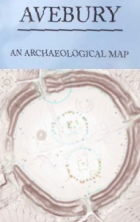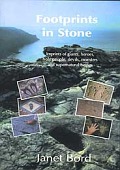<< Our Photo Pages >> Laodikeia - Ancient Village or Settlement in Turkey
Submitted by davidmorgan on Wednesday, 02 September 2015 Page Views: 9023
DigsSite Name: Laodikeia Alternative Name: Laodiceia ad Lycum, LaodiceaCountry: Turkey
NOTE: This site is 6.228 km away from the location you searched for.
Type: Ancient Village or Settlement
Nearest Town: Denizli
Latitude: 37.835690N Longitude: 29.108507E
Condition:
| 5 | Perfect |
| 4 | Almost Perfect |
| 3 | Reasonable but with some damage |
| 2 | Ruined but still recognisable as an ancient site |
| 1 | Pretty much destroyed, possibly visible as crop marks |
| 0 | No data. |
| -1 | Completely destroyed |
| 5 | Superb |
| 4 | Good |
| 3 | Ordinary |
| 2 | Not Good |
| 1 | Awful |
| 0 | No data. |
| 5 | Can be driven to, probably with disabled access |
| 4 | Short walk on a footpath |
| 3 | Requiring a bit more of a walk |
| 2 | A long walk |
| 1 | In the middle of nowhere, a nightmare to find |
| 0 | No data. |
| 5 | co-ordinates taken by GPS or official recorded co-ordinates |
| 4 | co-ordinates scaled from a detailed map |
| 3 | co-ordinates scaled from a bad map |
| 2 | co-ordinates of the nearest village |
| 1 | co-ordinates of the nearest town |
| 0 | no data |
Internal Links:
External Links:
I have visited· I would like to visit
43559959 oldstoneman would like to visit
jdeblois83 visited - their rating: Cond: 4 Amb: 5 Access: 5
davidmorgan have visited here

It was destroyed by an earthquake in 60CE.
Note: Athena and Janus’ heads unearthed in Ancient Laodicea, see the most recent comment on our page
You may be viewing yesterday's version of this page. To see the most up to date information please register for a free account.












Do not use the above information on other web sites or publications without permission of the contributor.
Click here to see more info for this site
Nearby sites
Click here to view sites on an interactive map of the areaKey: Red: member's photo, Blue: 3rd party photo, Yellow: other image, Green: no photo - please go there and take one, Grey: site destroyed
Download sites to:
KML (Google Earth)
GPX (GPS waypoints)
CSV (Garmin/Navman)
CSV (Excel)
To unlock full downloads you need to sign up as a Contributory Member. Otherwise downloads are limited to 50 sites.
Turn off the page maps and other distractions
Nearby sites listing. In the following links * = Image available
9.9km N 8° Hierapolis* Ancient Village or Settlement
11.6km N 5° Hierapolis Mausoleums* Rock Cut Tomb
14.4km ESE 112° Colossae* Ancient Village or Settlement
23.9km SSW 195° Herakleia Hieron Ancient Temple
26.5km NNW 328° Tripolis* Ancient Village or Settlement
36.6km WSW 247° Aphrodisias* Ancient Village or Settlement
46.4km NE 53° Eksi Hoyuk Ancient Village or Settlement
69.9km NE 48° Beycesultan* Ancient Village or Settlement
76.1km NW 318° Gavurtepe Ancient Village or Settlement
76.2km WSW 241° Hyllarima* Ancient Village or Settlement
82.4km SSE 156° Kibyra* Ancient Village or Settlement
84.9km W 275° Nysa* Ancient Village or Settlement
85.5km SE 130° Camur Hoyuk Ancient Village or Settlement
88.0km W 275° Acharaca Ancient Village or Settlement
90.3km ESE 108° Hacilar* Ancient Village or Settlement
95.7km ESE 103° Kurucay Hoyuk* Ancient Village or Settlement
99.8km SSE 165° Boubon Ancient Village or Settlement
102.5km WSW 255° Alabanda* Ancient Village or Settlement
104.3km E 97° Burdur Museum Museum
106.5km SSE 157° Balboura* Ancient Village or Settlement
107.0km WSW 242° Lagina Temple of Hecate* Ancient Temple
109.0km WSW 238° Stratonikeia* Ancient Village or Settlement
109.4km W 271° Aydin Archaeological Museum* Museum
111.7km W 272° Tralleis Ancient Village or Settlement
114.2km SSE 153° Caltilar Höyük Ancient Village or Settlement
View more nearby sites and additional images






 We would like to know more about this location. Please feel free to add a brief description and any relevant information in your own language.
We would like to know more about this location. Please feel free to add a brief description and any relevant information in your own language. Wir möchten mehr über diese Stätte erfahren. Bitte zögern Sie nicht, eine kurze Beschreibung und relevante Informationen in Deutsch hinzuzufügen.
Wir möchten mehr über diese Stätte erfahren. Bitte zögern Sie nicht, eine kurze Beschreibung und relevante Informationen in Deutsch hinzuzufügen. Nous aimerions en savoir encore un peu sur les lieux. S'il vous plaît n'hesitez pas à ajouter une courte description et tous les renseignements pertinents dans votre propre langue.
Nous aimerions en savoir encore un peu sur les lieux. S'il vous plaît n'hesitez pas à ajouter une courte description et tous les renseignements pertinents dans votre propre langue. Quisieramos informarnos un poco más de las lugares. No dude en añadir una breve descripción y otros datos relevantes en su propio idioma.
Quisieramos informarnos un poco más de las lugares. No dude en añadir una breve descripción y otros datos relevantes en su propio idioma.